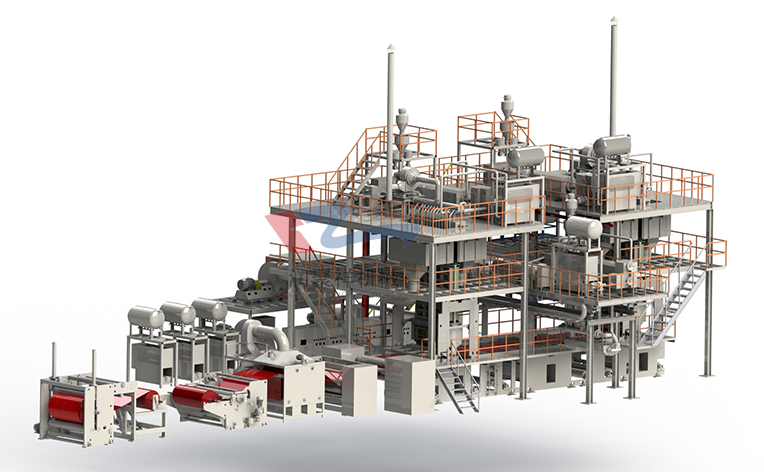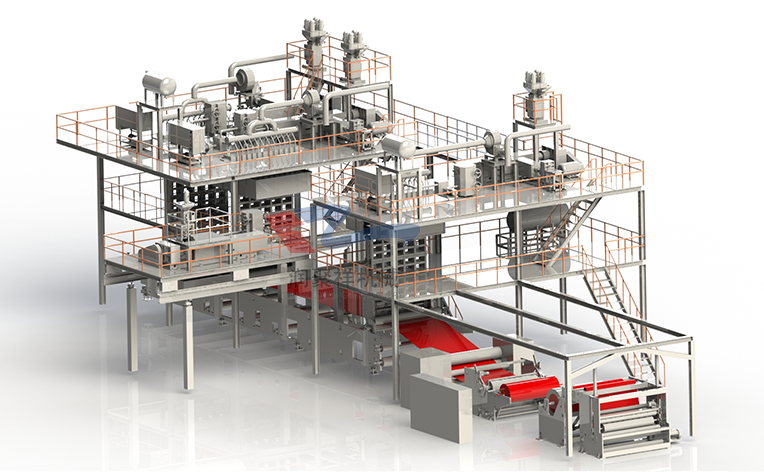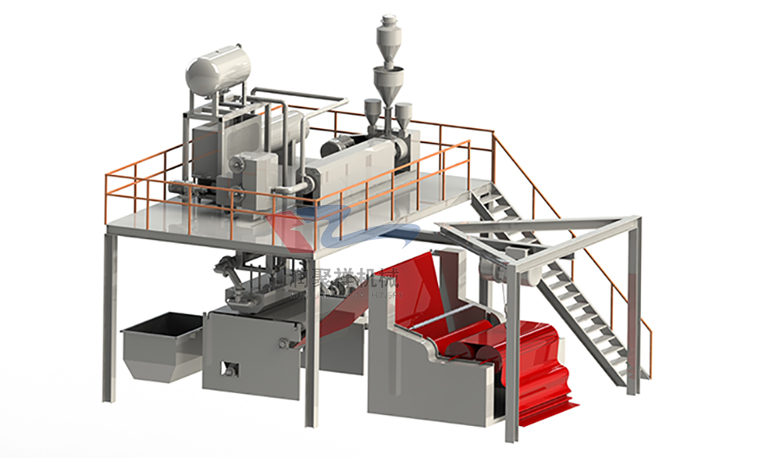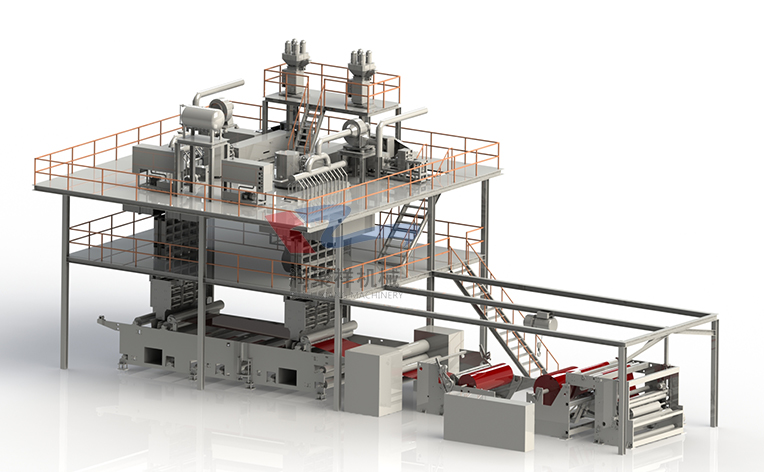

- Contact:Ms. Zhang
- Cel:0086-18053229518
- Mail:info@qdrunjuxiang.com
- Add:Chengma Road, Qijialing Village, Tongji New District, Jimo City, Qingdao
Anti-epidemic disease is "struggling", and there are still many difficulties: How far is it for spinning companies to fully resume work?
According to surveys by relevant agencies, as of February 25, the national spinning comprehensive utilization rate was 35%; among them, the resumption rate in Jiangsu was relatively good at 50%, followed by 43% and 36% in Fujian and Shandong; , Henan, and Zhejiang regions have lower operating rates than the national average. The return rate of spinning enterprises has gradually increased, but overall, the return to work process is slow, especially for small and medium-sized textile companies, which are generally later. So, what are the reasons for the delay in the resumption of work for small and medium-sized textile companies? For textile companies that rely on production and processing for their livelihoods, how much does delaying resumption of work affect their benefits?
Epidemic prevention and control tops the list
Shortage of workers is difficult to resume
It is understood that epidemic prevention and control is still the main reason for the shortage of workers and the low rate of resumption and driving of enterprises in various places. Some enterprise bosses said that foreign workers must go through the corresponding formalities when they return to the factory, and they may not be able to return to the factory smoothly after completing all the formalities. A person in charge of a spinning factory in Qingdao, Shandong said that the factory employs more than 190 people, of which 30% are employees from other provinces such as Henan and Gansu. Although the remaining employees are all from the province's labor force, they also come from different districts and counties. inconvenient. Other companies have also stated that although various control measures have been put in place, the resumption of production has to be postponed due to lack of employees.
Failure to obtain a permit to resume work is also the reason why some companies cannot resume work in a timely manner. At present, safety prevention and control is the first priority. Enterprises can only resume production after obtaining a permit to resume work. Nevertheless, the company also fully understood the concerns of governments at all levels and the prevention and control measures adopted, and frankly accepted on-site and qualification audits such as resumption training during the epidemic period, in place of epidemic prevention and control measures, and personnel management of file establishment and control. The reporting enterprise reports that as long as the hardware is installed and controlled in place, the software is complete, and the relevant permits are handled efficiently. Not only that, many local governments have also helped enterprises to find ways to help enterprises resume their work by actively adjusting their vacancies, organizing online labor markets, and developing employee skills training.
Experts believe that the obstacles to the start of construction are largely due to the impact of the epidemic. Although the government's control measures at all levels are thorough and complete, and the epidemic situation is fully blocked, enterprises have different levels of ability to prevent and control this sudden epidemic, so the difference in the difficulty of returning to work is prominent.
In late February, cotton textile enterprises have begun construction one after another, but workers are not full. How can production be carried out when employees are not full? In this regard, industry experts suggest: First, the line is not guaranteed to protect the factory. It is better to increase the occupancy rate of one line or a few production lines than to disperse people to N production lines in various places. The second is to arrange the order reasonably. Without affecting the overall delivery time, priority will be given to larger orders. The third is to maximize the labor force. At this stage, the manpower and production of each process are not completely balanced. In order not to waste valuable manpower, the production capacity should be properly stored in key processes to maximize the utilization of labor.
In addition, lack of raw materials is also one of the main problems faced by enterprises in resuming work. The owner of a spinning company said: "The raw materials were less stocked years ago, and even after the resumption of production, it quickly became a 'rice-free cook'." It is understood that due to concerns about market risks after the holiday, most small and medium-sized enterprises can only support raw materials for 7 to 10 days. Dare not to start until the logistics is fully restored. The incomplete industrial chain caused by poor logistics has become a major obstacle to the resumption of production and textile industry.
"The cost of border epidemic prevention and production at least increases by 10% to 20%. This is even worse for companies that already lack cash flow." Industry insiders said that in addition to rent, workers' wages, and procurement of raw materials, it is also necessary. Fewer masks, disinfectants, and other protective supplies, as well as isolation rooms, temperature guns, and daily employee temperature testing are all responsible for these costs, which will cause greater cost for the enterprise. Therefore, some enterprises have proposed that they hope that the government will further introduce relevant policies and measures to help enterprises resume work and resume production, such as reducing rents and exemptions, providing epidemic prevention materials in a timely manner, helping to resume work, giving orders and funding assistance, and increasing stock discounts. Supporting enterprises with technological advantages and qualified professional protection product enterprises are effectively connected.
Incomplete industry chain
Textile plant "difficult to make a single tree"
Unlike a few large textile companies with complete industrial chains, a major problem facing most domestic spinning companies after resumption is the incomplete industrial chain.
Spinning companies stated that even at the beginning of February, even if the company could resume work, only a few of the downstream printing and dyeing and garment factories resumed work, and in the case of inventory, the downstream is not anxious to order new goods, so the spinning mill is now Taking new orders is not easy. At present, yarn sales occasionally take off, but local transportation has not resumed, and delivery channels are not smooth. There are almost no large orders, and occasional bulk shipments are made. Yarn prices are mainly pre-Spring Festival prices, and there are downstream The customer asked for the price, but did not see a new order. It is understood that enterprises have also tried to strengthen communication with customers through online office and online transactions to stabilize old customers and expand new customers. However, companies are also worried about the future market. For example, the Guangdong market is mainly dominated by spring and summer orders. Once the season is over, the order volume will be greatly affected.
Industry experts believe that the current resumption of production in textile companies is actually a big concept in a certain sense. The number of employees and the rate of driving are fundamental issues. The status of order holding, raw material and product inventory, auxiliary guarantees for equipment operation, In the current situation of the epidemic, the continuity of production and operation will restrict the normal operation of the enterprise.
In terms of orders, most of the orders currently held by enterprises are orders before the Spring Festival. Some companies have abundant orders, which can be made to the end of the first quarter or even longer, and some are ten and a half months. Will these orders change in real time now? Is there any downstream adjustment information? It is still dynamic. With the development of the epidemic, the market is likely to change.
In terms of raw material inventory, cotton textile companies are not worried about the supply of raw materials because of the guaranteed supply of cotton resources, but it is uncertain whether they can maintain orderly sales after resumption of work. A company is worried that what to do after the outbreak of cotton quotation and the processing order price is too big? Some companies are worried that after the machine is turned up, those key and commonly consumed parts that are normally purchased can be bought normally. Textile machinery equipment manufacturing enterprises are also facing epidemic resistance. If the enterprise cannot resume work for a while, the original product supply will fall off the chain.
Unsure about subsequent orders
The market still needs to wait and see
Today, the epidemic sniper war is not over. With the resumption of textile enterprises, the production and sales of textile products will face new changes.
In the market, some yarn production companies produce conventional products, and they establish fixed supply and marketing relationships with downstream enterprises by setting varieties, specifications, and quantities. However, these companies do not represent the entire industry. More spinning companies still rely on orders received to arrange production operations. At present, small and medium-sized spinning enterprises basically rely on the orders held to arrange production and sales. The main body of the production orders for driving in mid-February comes from the end of last year.
At the same time, after the recovery of production and operation of enterprises, they also face several problems. The first is to quickly organize the production based on the orders in hand and the demand of the downstream enterprises, and implement the effective docking of the product with the demand side as soon as possible and enter a closed-loop cycle of normal supply and demand. The second is to actively seek new business operations. The new situation is that the true trend of the textile market after the epidemic has not yet been clearly established. Almost all interviewed companies believe that post-epidemic market changes are inevitable, and that international markets may impose barriers on Chinese textile exports; textile consumption will be reflected by the impact of post-epidemic economic pressures.
At present, some companies are not sure about follow-up orders. As a result of their communication with downstream customers, companies in the industry are waiting to wait and see. Because these companies are located in different regions, the severity of the epidemic is different, the industry policies are different, and the resumption time is different. It is really difficult to match industries with each other.
As a major textile country, if the international and domestic markets for Chinese textiles are blocked due to the epidemic, then the upstream business will quickly stagnate, the original cotton will not be sold, the spinning wheel will not be opened, and the yarn will have no provenance. Many companies are worried about more issues, such as how to deal with the production and marketing of epidemic areas (such as the main cotton production and sales areas in Hubei and surrounding cotton producing provinces)? Will raw and auxiliary materials and textiles from these places be regarded differently by the industry or consumers? Is the ongoing business with the affected area discontinued or continued? These problems are contradictory, and the enterprise is solving or dissolving it. I believe that with the passage of the epidemic, everything will gradually become clear.
- At the beginning of the new year
- The Impact of the Fed's Interest
- In the prelude of early winter,
- The volume of industrial textile
- After the Minor Snow season, Qin
- Innovation and upgrading in the
- The non-woven fabric machinery o
- The operation of China's industr
- As the chill of November intensi
- The textile industry forges new
- About RunJuXiang
- Company Profile
- Company Culture
- Non-woven production line
- Spunbond nonwoven production line
- Two-component Bi-Co
- Spun melted nonwoven production line
- Equipment Accessories
- Meltblown nonwoven production line
- Non-woven products
- News Center
- Company News
- Show Information
- Contact Us
- Contact RunJuXiang
- Online Message





